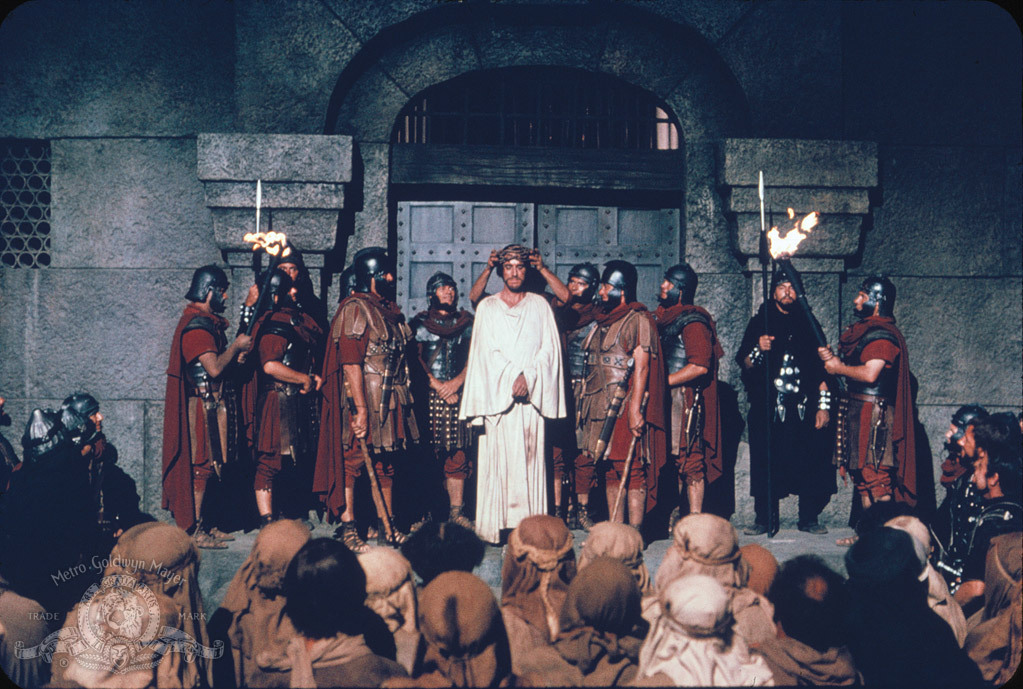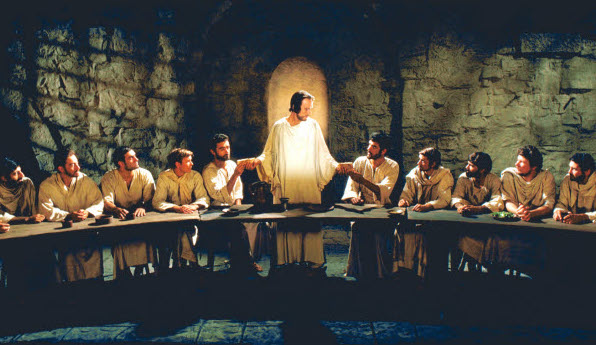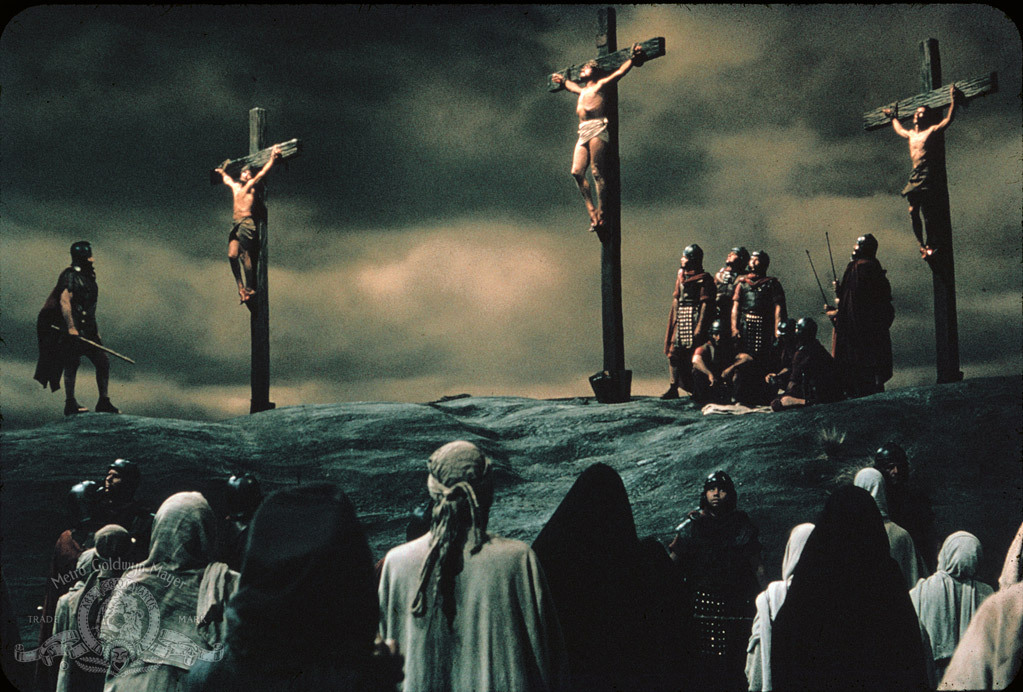The Greatest Story Ever Told (1965)

The Greatest Story Ever Told (1965) – A Monumental Epic of Faith and Cinema
The Greatest Story Ever Told, directed by George Stevens and released in 1965, stands as one of the most ambitious and grand cinematic portrayals of the life of Jesus Christ ever undertaken in Hollywood. This film is a sweeping, reverent, and artistically crafted retelling of the Gospel story, tracing the life, ministry, death, and resurrection of Jesus, and it has left a lasting legacy in the canon of biblical epics. Its scope, scale, and artistic sensibility reflect not only the cinematic tastes of the mid-20th century but also a profound cultural moment in which faith and storytelling intersected on a grand stage.
Historical and Cultural Context
To appreciate The Greatest Story Ever Told, it’s important to place it within the context of its era. The 1950s and 1960s were a golden age for epic films, particularly biblical epics, a genre that included masterpieces like Ben-Hur (1959), The Ten Commandments (1956), and King of Kings (1961). These films were designed to draw large audiences to theaters with their grand scale, lavish sets, and spectacular storytelling, often blending religious reverence with Hollywood spectacle.
During this period, the Cold War era brought with it a cultural emphasis on traditional values, and religious-themed movies played a role in reinforcing faith and moral ideals in a time of geopolitical uncertainty. The Greatest Story Ever Told emerged as a cinematic statement of spiritual reflection and artistic ambition.
The Director: George Stevens
George Stevens was already an established and respected director by the time he embarked on this project. Known for his work on films such as Giant (1956), A Place in the Sun (1951), and Shane (1953), Stevens brought a combination of technical mastery and emotional depth to the film. His ability to craft both intimate character moments and sweeping panoramic scenes made him uniquely suited to helm this epic.
Stevens took great care in treating the subject matter with solemnity and respect. His vision for the film was not just to recount biblical events but to create a cinematic experience that conveyed the profound spiritual significance of Jesus’ life and message.
Narrative Structure and Storytelling
The film’s narrative spans the entire life of Jesus Christ, beginning with the annunciation and the Nativity, continuing through His teachings, miracles, and interactions with His disciples, and culminating in His crucifixion and resurrection. The storyline follows the canonical Gospels closely, though it takes creative liberties typical of biblical adaptations to weave the narrative into a cohesive cinematic form.
One of the film’s most distinctive features is its episodic structure. Rather than focusing solely on Jesus, the story often shifts to the lives and perspectives of various characters around Him: John the Baptist (played by Donald Pleasence), Pontius Pilate (Martin Landau), Mary Magdalene (Debra Paget), and others. These vignettes enrich the narrative, offering a multifaceted view of the world Jesus inhabited.
This approach offers a broad and inclusive retelling of the biblical story, capturing not only the divine but the human elements of faith, doubt, and redemption. However, this episodic style, while ambitious, is also the source of some criticism for the film’s pacing, which many modern viewers find slow or uneven.
Max von Sydow as Jesus
Max von Sydow’s portrayal of Jesus is a central pillar of the film’s gravitas. Von Sydow, already known for his work with director Ingmar Bergman, brings a quiet dignity, calm intensity, and spiritual presence to the role. His performance is understated and solemn, eschewing melodrama for a more introspective and contemplative Jesus.
Unlike many portrayals that focus on overt displays of divinity or emotion, von Sydow’s Jesus is often reflective and serene, conveying a sense of divine wisdom and compassion through subtle gestures and measured speech. This portrayal has been praised for its reverence and restraint, aligning well with the film’s overall tone.
Star-Studded Supporting Cast
One of the hallmarks of The Greatest Story Ever Told is its remarkable ensemble cast, which includes a host of well-known actors and actresses in supporting roles, many of whom appear in brief but memorable scenes. This star power added to the film’s appeal upon release and helped to create a rich tapestry of characters.
Notable cast members include:
-
Charlton Heston as John the Baptist, whose commanding presence lends strength to the film’s depiction of Jesus’ forerunner.
-
Telly Savalas as Pontius Pilate, bringing a mix of authority and inner conflict to the role of the Roman governor.
-
Angela Lansbury as the Virgin Mary, who delivers a deeply human and compassionate portrayal of Jesus’ mother.
-
Sidney Poitier as Simon of Cyrene, whose role highlights themes of service and sacrifice.
-
John Wayne, who makes a cameo as a Roman centurion, symbolizing the film’s bridging of Hollywood legend with biblical epic.
This all-star cast, alongside many other respected character actors, enhances the film’s scope and provides a diverse array of human perspectives on the central story.
Cinematography and Production Design
The film’s visual elements are among its most impressive achievements. Shot in CinemaScope, the widescreen format allows for breathtaking vistas and detailed set pieces. Cinematographer William C. Mellor captures the rugged beauty of the Judean landscape and the grandeur of ancient Jerusalem with remarkable clarity and scale.
The production design and costumes contribute heavily to the film’s immersive quality. The attention to historical detail in costumes, architecture, and props creates a convincing world that transports viewers to the time of Jesus. Lavish sets, including the Temple, Roman palaces, and the Sea of Galilee, underscore the epic’s ambition.
Many scenes are staged with grandeur—crowds filling the streets, large-scale processions, and monumental gatherings—emphasizing the sweeping nature of the narrative. This grandiosity is complemented by intimate moments, such as Jesus’ conversations with His disciples or His solitary prayers, which provide emotional balance.
Music and Soundtrack
The score, composed by Alfred Newman, is both majestic and reverent, enhancing the film’s spiritual tone. Newman’s orchestral arrangements underscore the emotional highs and lows, from the awe-inspiring miracles to the somber moments of betrayal and sacrifice.
Music plays a key role in elevating the film’s impact, often swelling at moments of divine revelation or spiritual significance. The soundtrack helps to unify the episodic narrative, lending cohesion and emotional depth.
Themes Explored
The Greatest Story Ever Told explores many profound themes central to Christianity and human experience:
-
Faith and Belief: The film depicts the journey of belief not only of Jesus but also of those around Him, from skeptical Pharisees to faithful disciples.
-
Sacrifice and Redemption: Central to the story is Jesus’ willingness to suffer and die for humanity’s sins, an act that defines Christian theology.
-
Compassion and Mercy: Jesus’ interactions with the poor, sinners, and outcasts emphasize His message of love and forgiveness.
-
Divine Mystery: The film treats Jesus as both fully human and fully divine, a mystery reflected in the reverent portrayal and the solemn narrative tone.
-
Hope and Resurrection: The climax on Easter morning offers a message of hope and new life, resonating through the centuries.
These themes are conveyed through dialogue, character development, and visual symbolism, inviting viewers to reflect on the spiritual significance of Jesus’ life.
Reception and Criticism
Upon its release, The Greatest Story Ever Told received mixed reviews. While praised for its impressive production values, strong performances, and reverent tone, some critics found the film slow-paced and overly long. The episodic storytelling, though ambitious, was seen by some as fragmented, affecting the narrative flow.
Modern audiences, accustomed to faster editing and more dynamic storytelling, may find the film’s deliberate pacing and solemn style challenging. However, for those interested in a serious, majestic retelling of the Gospel story, the film remains a powerful experience.
Despite its mixed critical reception, the film has been influential in shaping cinematic portrayals of biblical narratives and continues to be appreciated by religious audiences and cinephiles alike.
Availability and Legacy
Today, The Greatest Story Ever Told is accessible on platforms such as Amazon Prime and YouTube, making it easy for modern viewers to experience this epic at their convenience. Its timeless message and majestic production make it a go-to film for religious celebrations, particularly around Christmas and Easter.
The film has also inspired subsequent biblical epics and adaptations, setting a high bar for cinematic reverence and scale. Its legacy lies in its earnest attempt to bridge faith and film artistry, capturing the spirit of the greatest story told in a medium accessible to all.
Conclusion
In sum, The Greatest Story Ever Told (1965) is a monumental cinematic achievement that attempts to capture the profound life and legacy of Jesus Christ with grandeur and solemnity. George Stevens’ direction, Max von Sydow’s contemplative performance, the impressive ensemble cast, and the film’s sweeping visual and musical artistry combine to create a majestic work of faith-inspired cinema.
While its pacing may feel slow for some, and its episodic structure uneven, its commitment to reverence and storytelling remains unmatched in many ways. Whether you seek spiritual inspiration, cinematic history, or a majestic depiction of the Gospel, this film offers an enduring journey into the heart of Christianity’s foundational narrative.










